Spring Boot Presentation

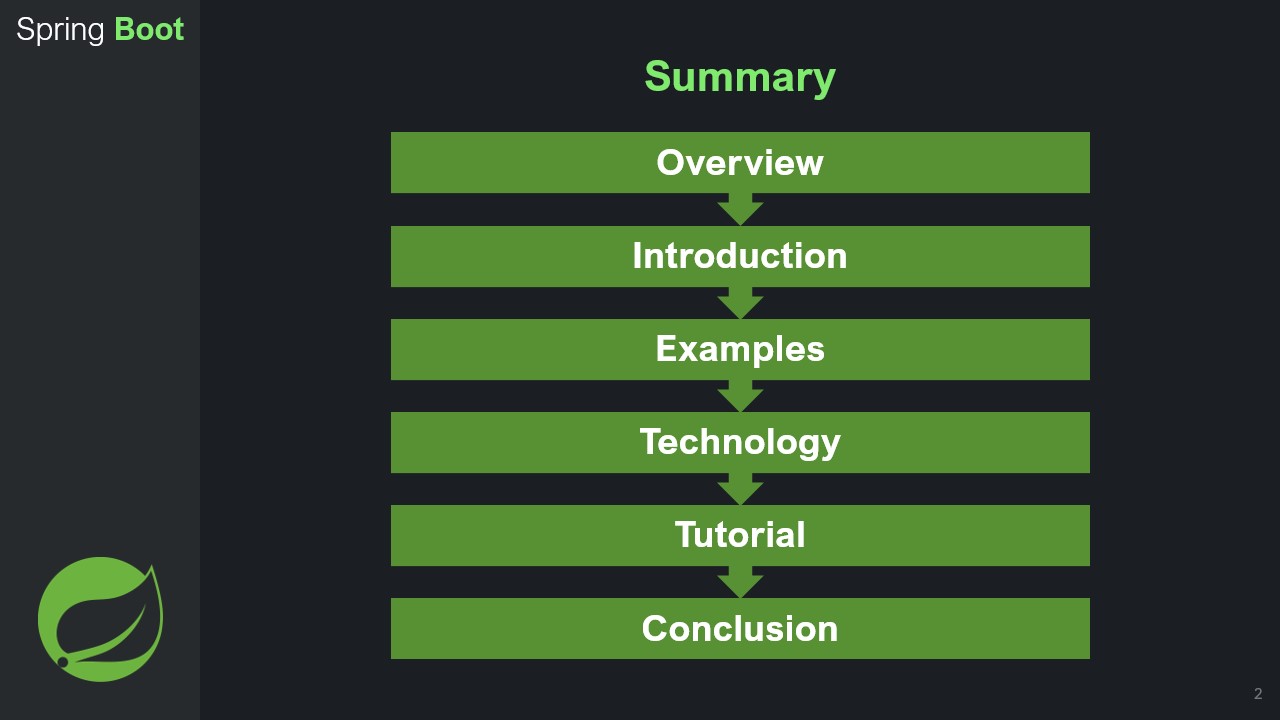
Introduction
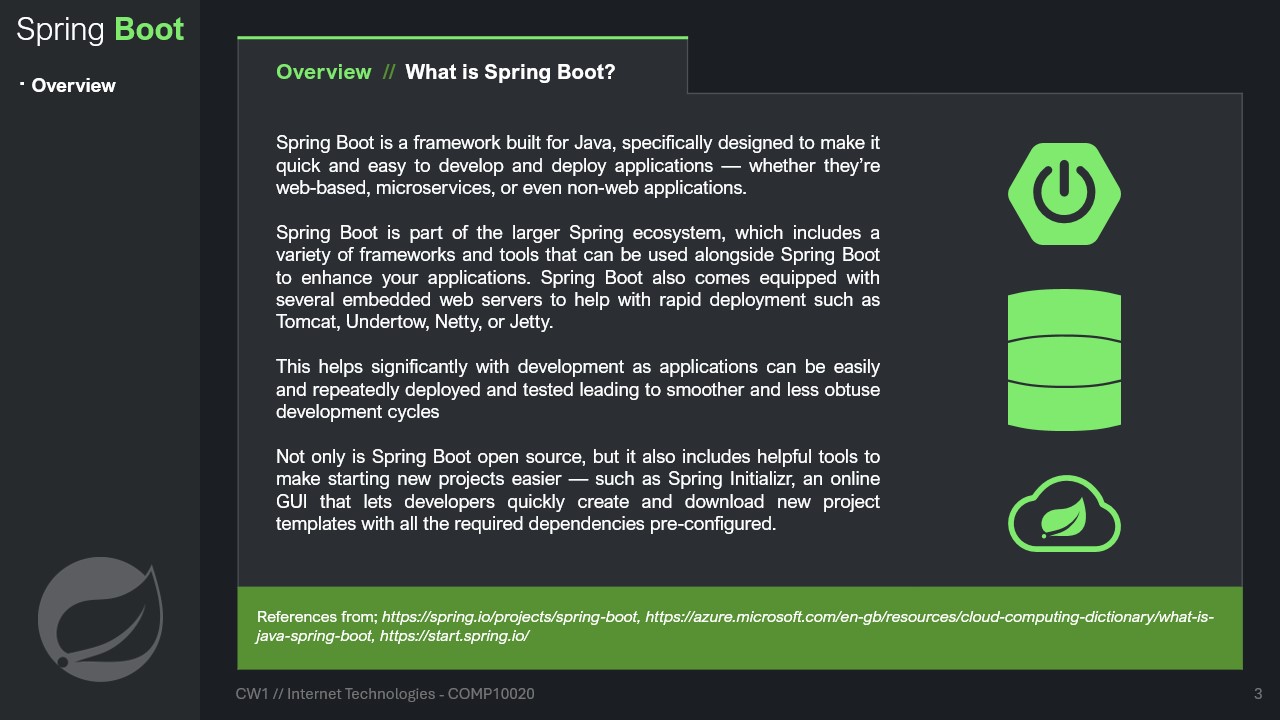
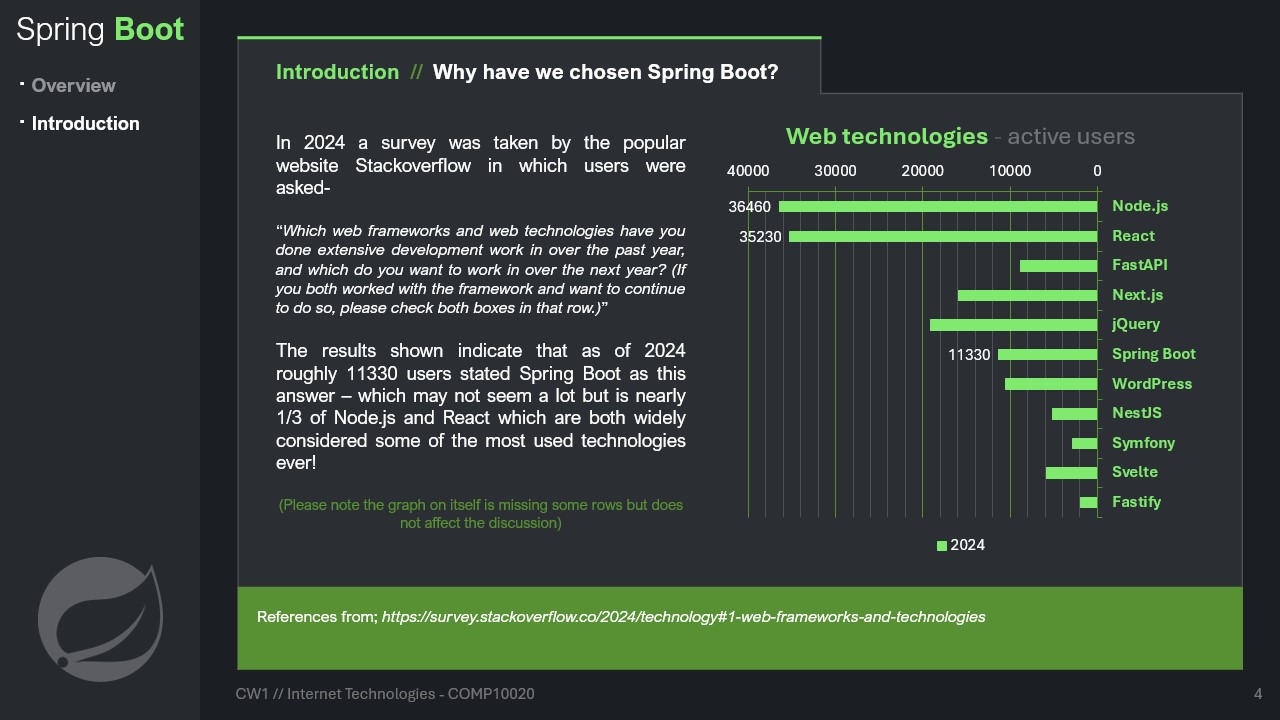
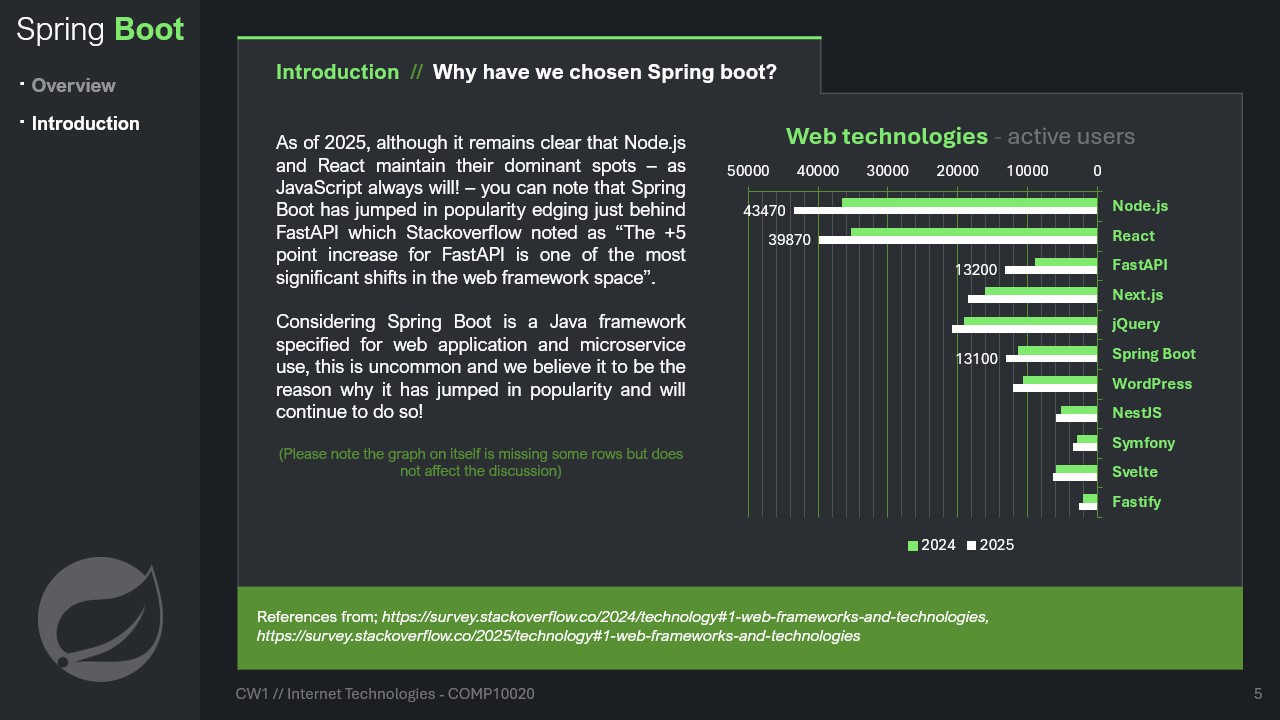
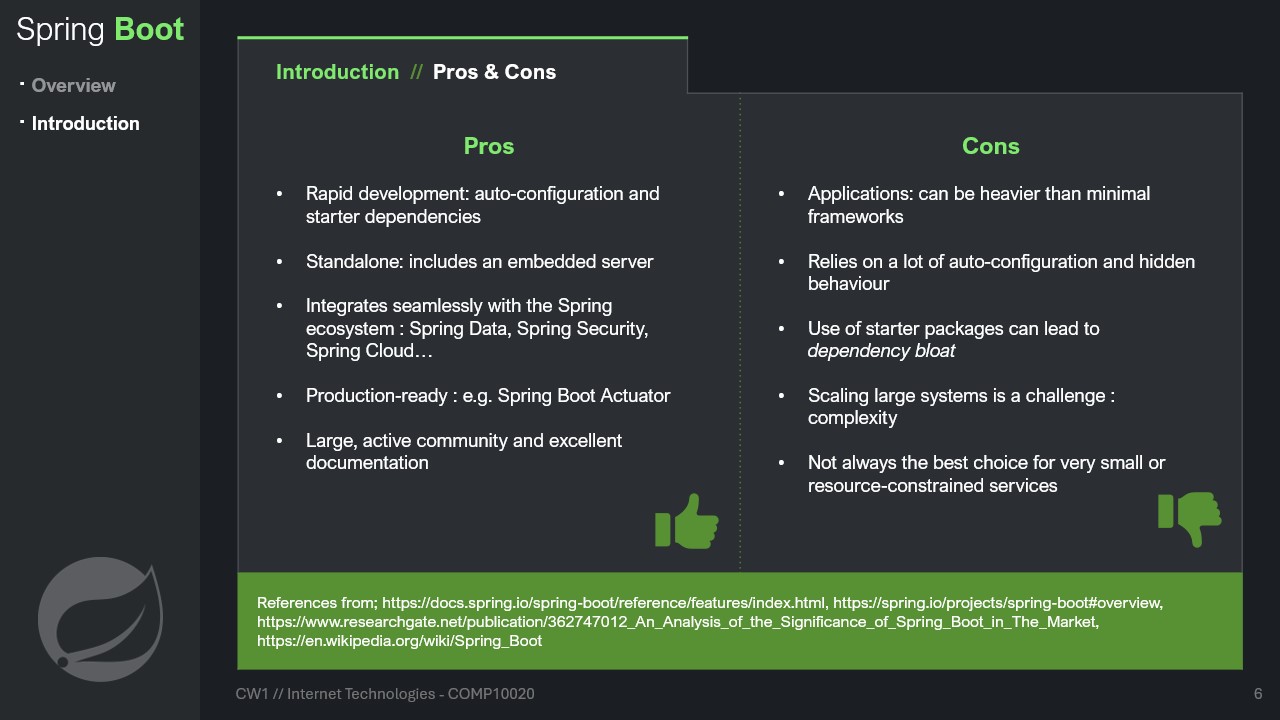
Although Spring Boot is appreciated for the way it simplifies Java development and accelerates productivity, there are still some challenges to keep in mind. Thanks to Spring Boot, developers can launch a project with minimal setup, without deploying to an external application server and benefit from many features such as those offered by Spring Boot Actuator. However, all these features increase start-up time and memory usage, make debugging harder, include unnecessary libraries and make configuration more complex in large projects.
Examples
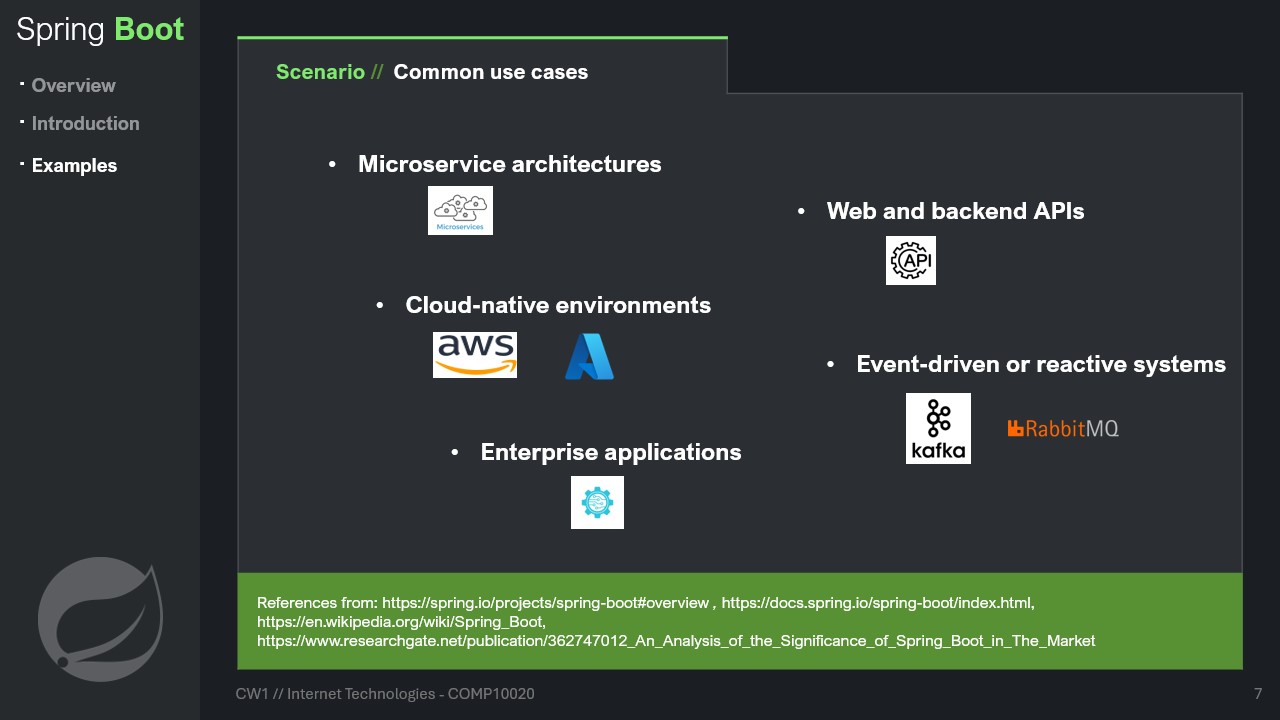
Spring Boot is widely used for microservices, where each service runs independently and exposes a REST API. It’s also common in web and backend development, for servers handling requests from mobile or front-end clients. In cloud-native environments, it runs smoothly in Docker containers and deploys easily on platforms like AWS or Azure. It also supports event-driven systems through tools like Kafka or RabbitMQ, and remains a solid choice for enterprise applications such as batch processing or data pipelines.
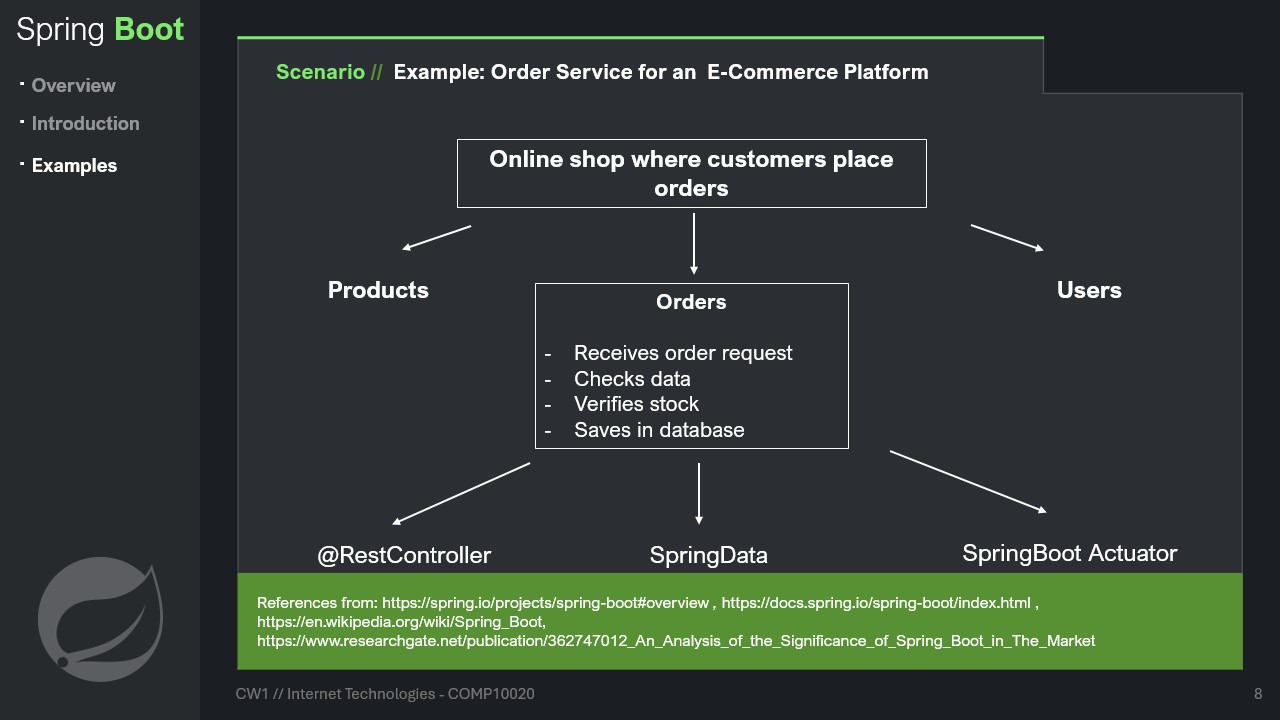
Behind the scenes of the online shop, the system is built from several small services: for example, one for products, one for users, and another for orders. The Order Service, for example, is quick to build with Spring Boot:
- REST endpoints can be created using @RestController,
- Connection to the database can be done using Spring Data,
- The application can be monitored through Spring Boot Actuator.
When it’s ready, the application is simply packaged as an executable JAR file and can be run directly (even inside a Docker container).
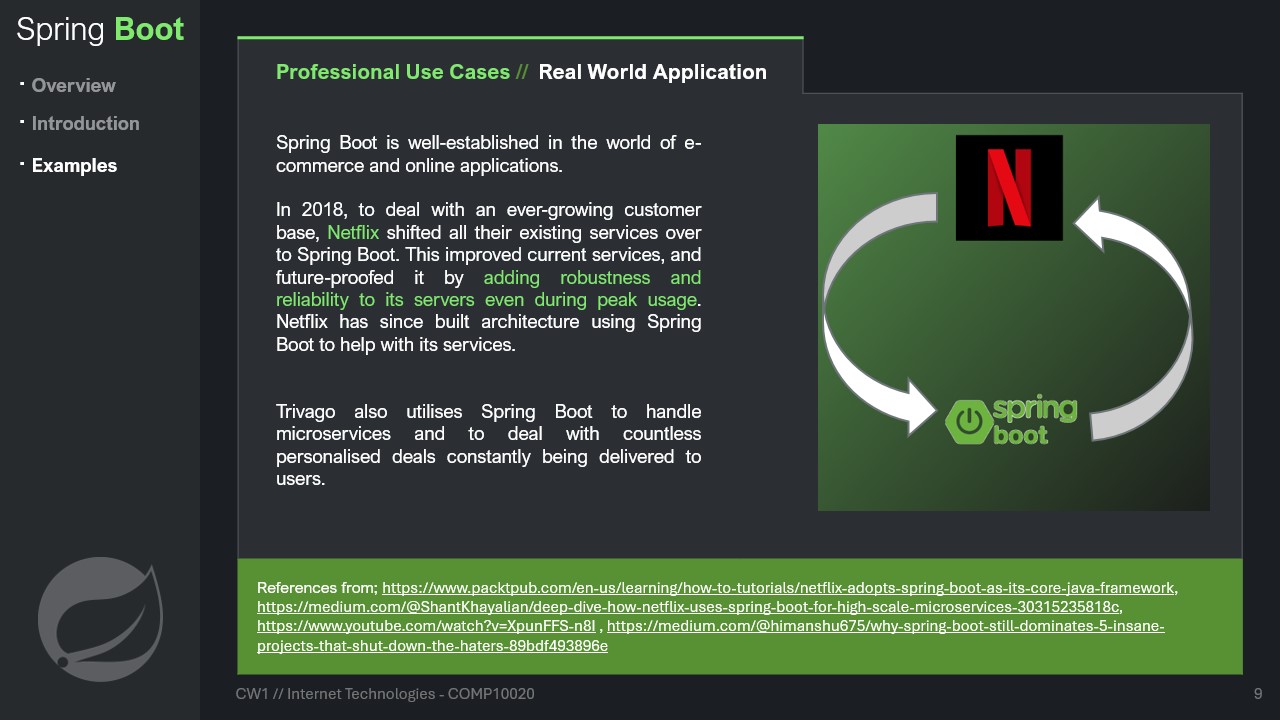
Netflix has over 200 million users on their platform so their applications must be run through a framework that can handle that much traffic. Netflix has over 3000 applications all running through Spring Boot.
Trivago has also distributed hundreds of millions of specific, personalised offers to users.
Technology
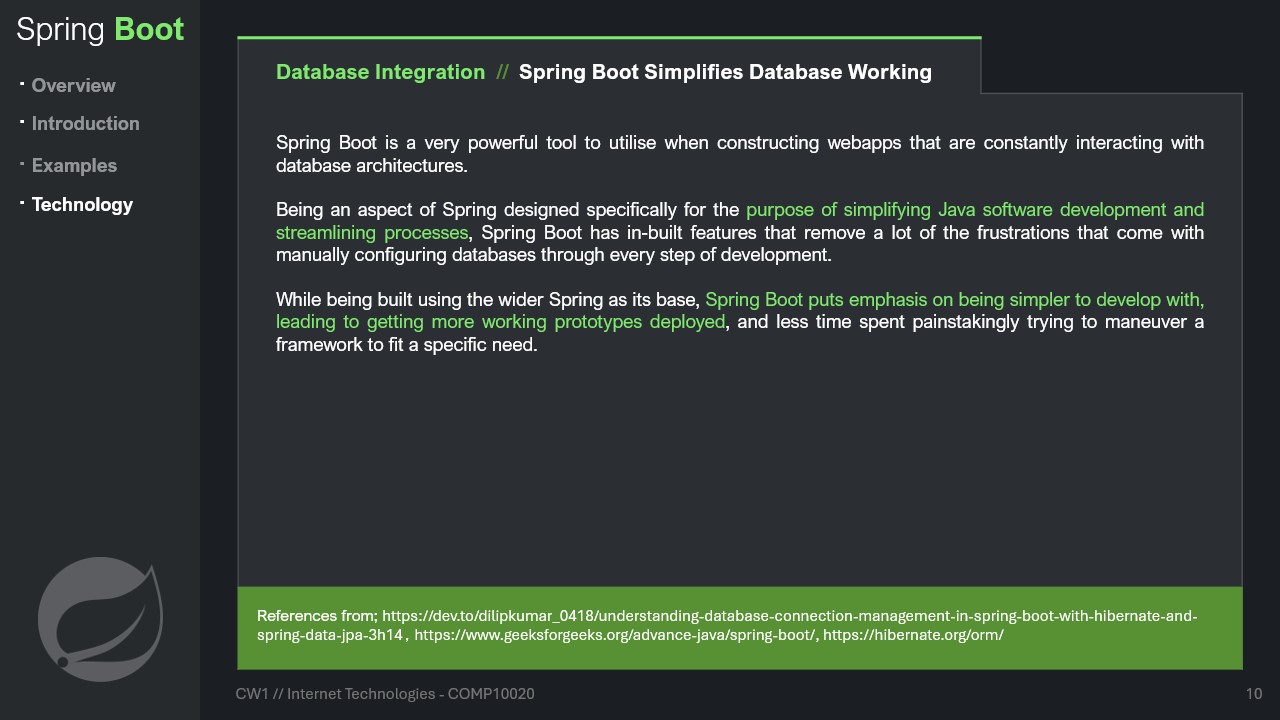
For both existing businesses and start-ups, it is vastly easier to justify a project and to successfully get a point across through functioning prototypes that actually exist in front of a user (even if a prototype is unfinished or bug-riddled), rather than through hypotheticals and ideas.
This is what makes Spring Boot such an attractive option. There’s an understanding that more time spent in development without a working prototype means less user feedback, and could hold other departments of a project back.
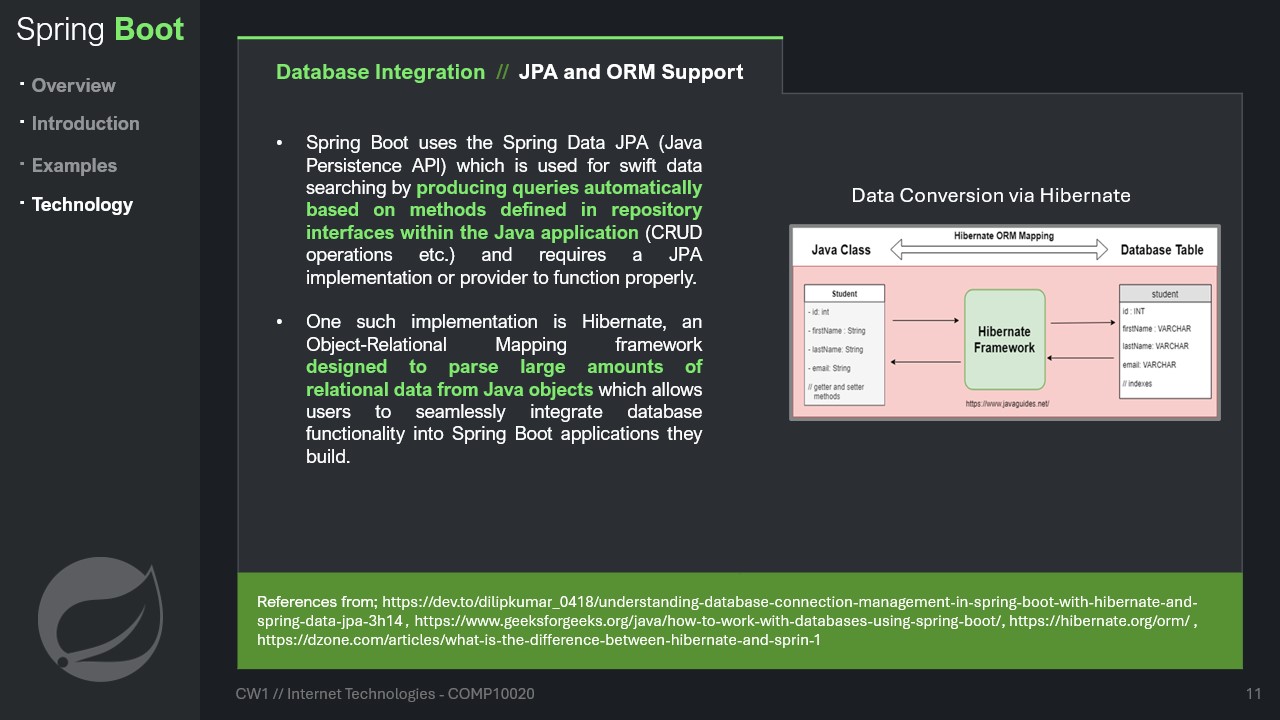
While other implementations such as EscapeLink exist, Hibernate is by far the most popular amongst them, with the most usage and in-depth documentation.
Hibernate removes human error from database configuration by mitigating manual data entry and produces intrinsically legitimate relations automatically through Java objects.
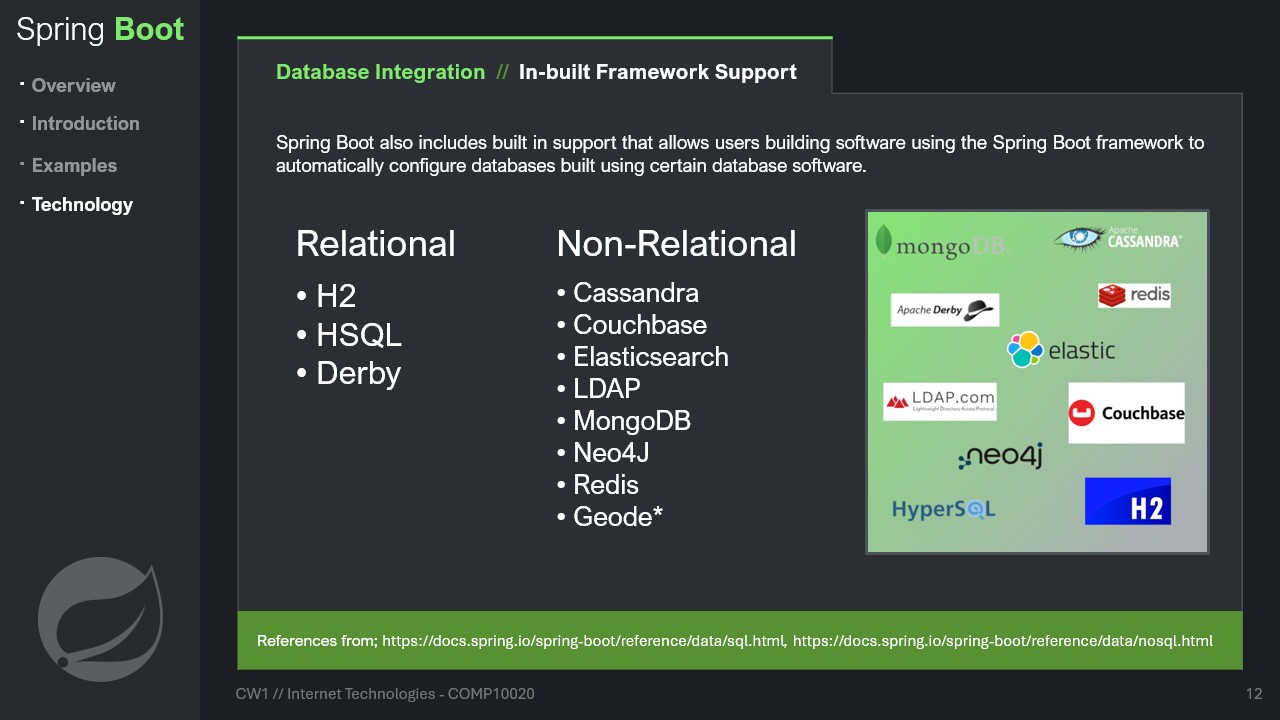
Netflix utilises Cassandra through Spring Boot to deal with the immense amount of data they hold.
While Spring Boot comes equipped with fundamental support for a wealth of database frameworks, these are not the only frameworks compatible with Spring Boot projects. If developers are attached to other particular database frameworks (such as MySQL or PostgreSQL), these frameworks can still be manually configured as normal to work with Spring Boot.
Tutorial
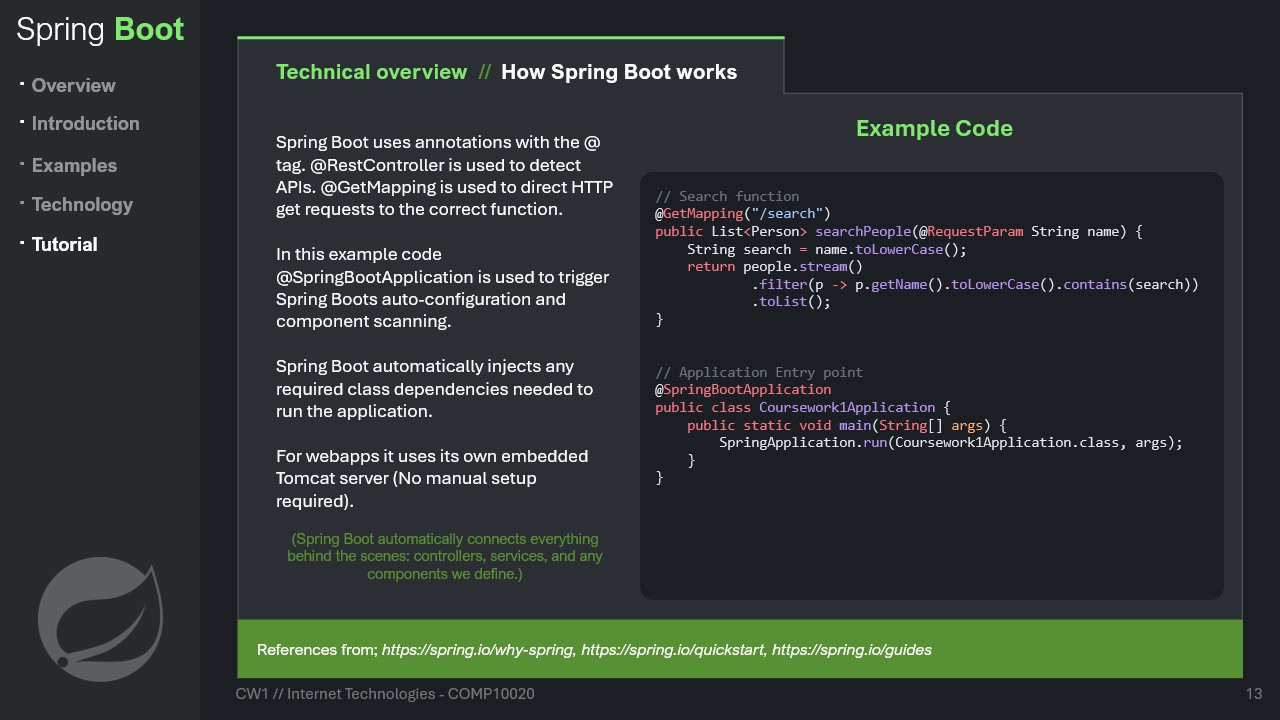
Spring Boot is designed to simplify Java web app development. Instead of manually setting up servers and dependencies, it uses annotations and automatic configuration to handle most of the setup for you. For example, @SpringBootApplication starts the application and triggers auto-configuration, while @RestController and @GetMapping help define API routes.
Spring Boot automatically injects required dependencies into classes, this is called dependency injection. Spring Boot also runs its own embedded Tomcat server, so you don’t need to deploy one yourself manually.
In the example, you can see a simple function that searches a list of people. When a user calls the /search endpoint, the method filters results and returns a list as JSON.
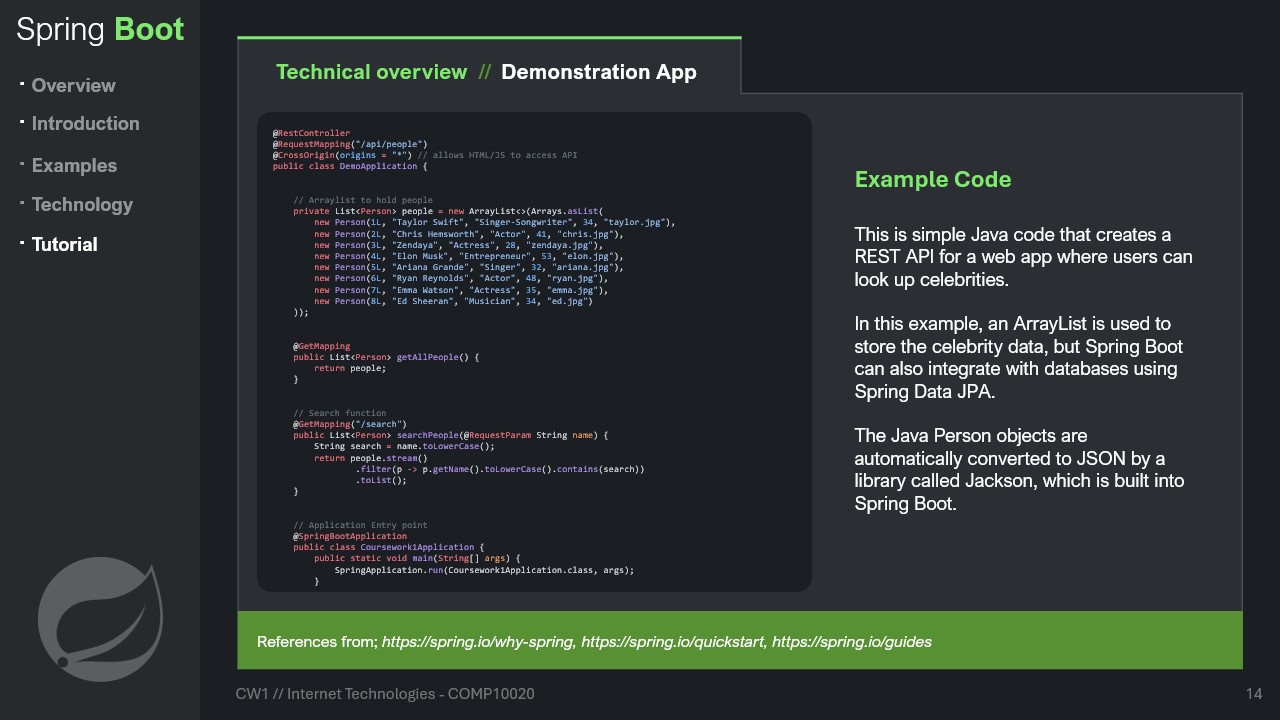
Here’s the main part of the demo app, a REST API built using Spring Boot. It defines a small dataset of celebrities, each stored as a Java object with name, occupation, age, and image.
The @RestController annotation tells Spring this class handles API requests. The @RequestMapping at the top defines the base route, and @GetMapping below creates endpoints that return either all people or just those matching a search term.
In a real project, we could connect this to a database with Spring Data JPA, but here we use an ArrayList to keep the example simple and focused.
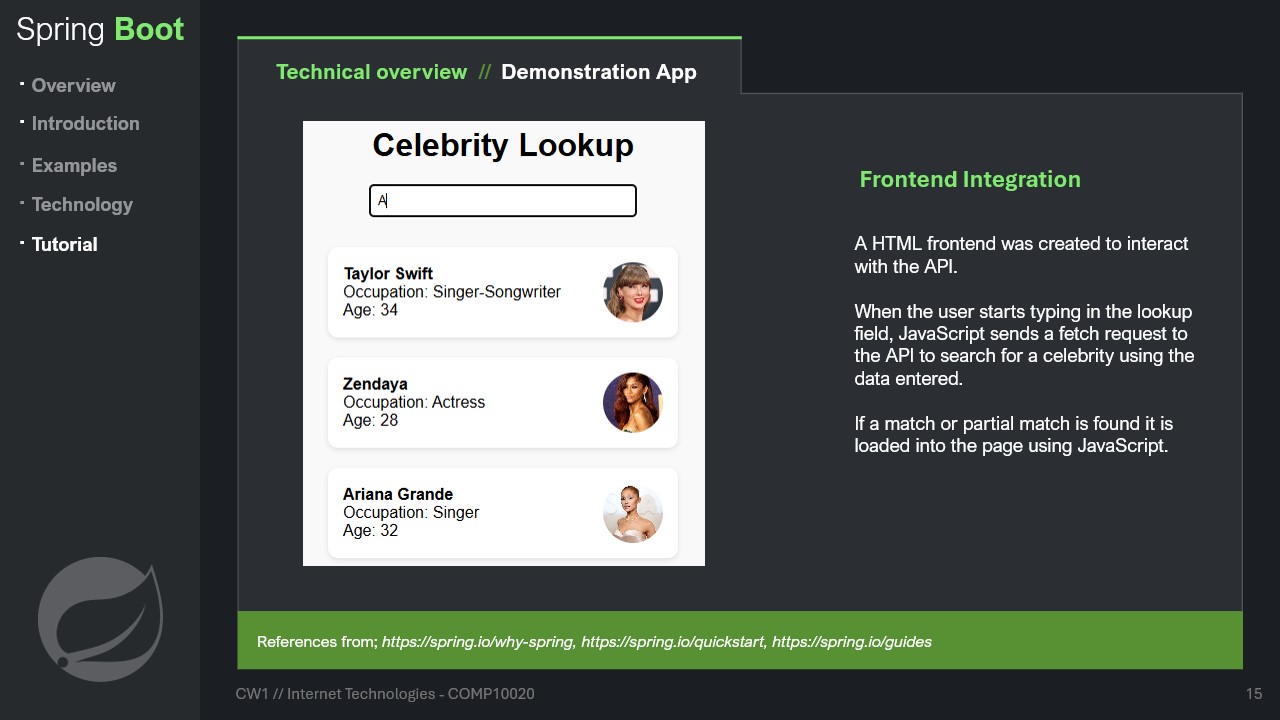
Finally, we connect our API to a simple frontend built with HTML, CSS, and JavaScript.
The page includes a search box, when the user types, JavaScript uses the fetch() function to send a request to our Spring Boot API. The backend responds with a JSON list of matches / partial matches, and the JavaScript dynamically displays the results on the page.
Conclusion
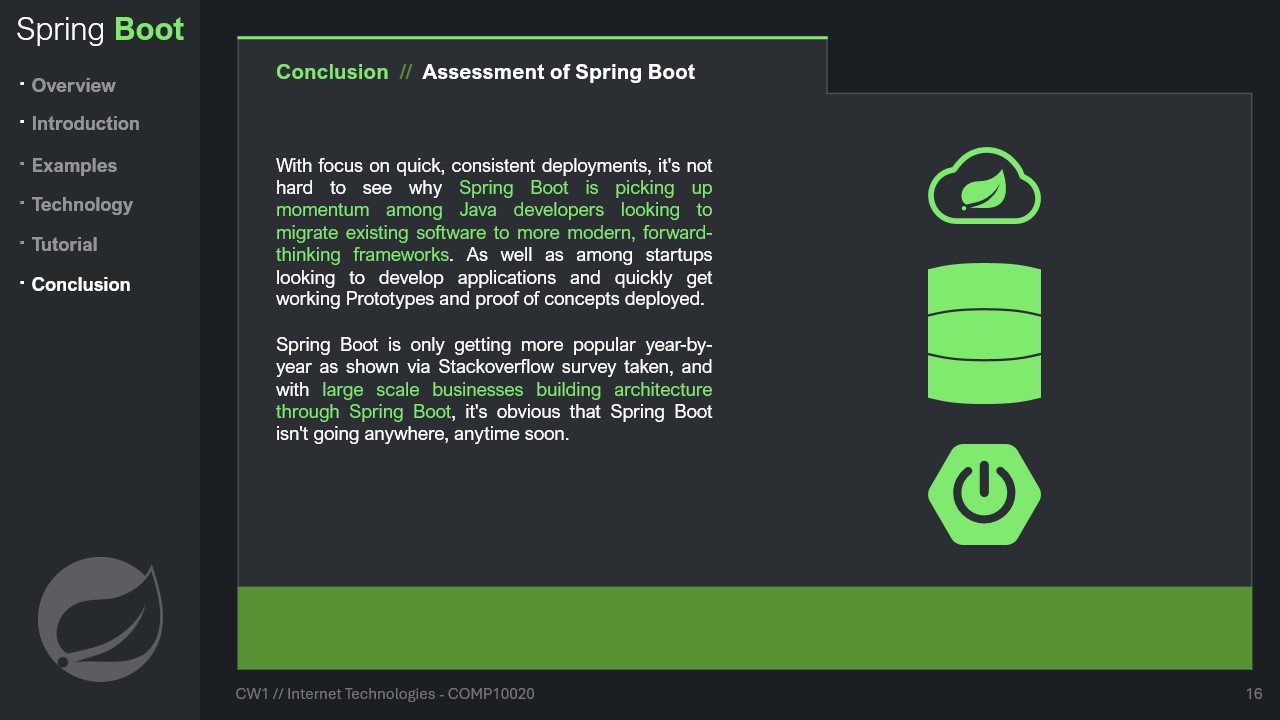
With AI solutions increasing in popularity at a seemingly exponential rate, there isn’t time for development teams to manually navigate through obtuse configuration procedures and cobble together solutions that theoretically might work. Spring Boot is built fundamentally with ease-of-use and smooth deployments in mind.